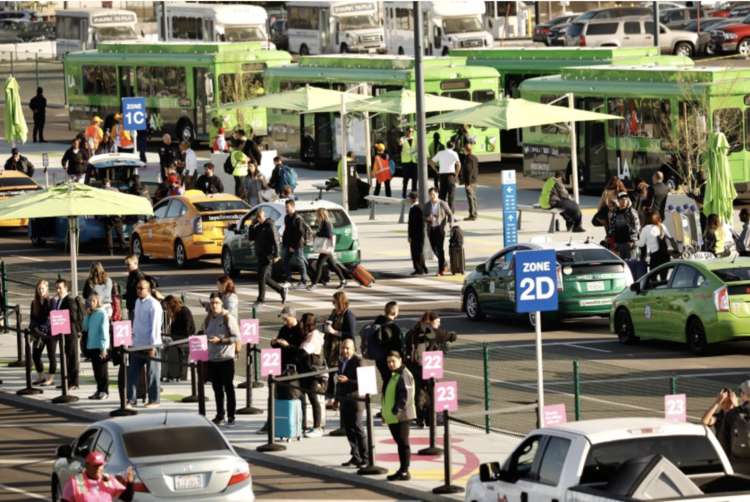Vanity Metrics in Action
They always say what you measure is the result you’re going to get. But the question always is, are you measuring the right things? Recently, the Los Angeles International Airport (LAX) instituted a centralized area where arriving passengers can hail a cab or meet their ridesharing (Uber or Lyft) drivers. This new process was initiated to mitigate the heavy traffic circling the airport, causing aggravation and delays for departing and arriving passengers. In doing so, LAX is following in the footsteps of airports around the country in moving ridesharing traffic elsewhere.
Early results are in, while a few folks are celebrating less traffic navigating the (poorly designed) horseshoe that is LAX, the result has been a big mess. Let’s step back from the incredibly poor implementation and think about what an airport is supposed to do outside of airside operations and experience. I don’t have access to the KPIs that LAX or any other airport is measuring, but as a frequent traveler, I know just enough to be dangerous. (Watch out!)
Photo courtesy of the Los Angeles Times
I would imagine that at the top of the list is the safety and security of the passengers and crew, as well as those getting to and from the airport. However, as a traveler, the one thing I want most is to spend as little time as possible getting from my mode of transportation to the gate, and vice versa when I return. And in aggregate, that speaks to passenger throughput as an important metric and to the “latency” of passengers: how much time does it take for passengers to exit the airport after arriving at the gate, and how much time does it take for passengers to get to their gate once they’re on the airport premises.
By focusing on the traffic impact of ridesharing and taxi services, LAX missed the bigger goal of moving passengers in and out of the airport. How would this change impact throughput and passenger latency? Would more people be spending more time at the airport? Or are they spending less time? It appears one part of the process has been optimized without taking into consideration the broader picture, regardless of implementation.
How might it be different if traffic managers focused on measuring throughput and latency? That could lead to other outcomes. For instance, if a significant percentage of people are using ridesharing and taxi services at LAX, would it be prudent to move other forms of transport instead, given that traffic can be caused by an incremental number of vehicles? One option might be to relocate the pick-up and drop-off areas for solo drivers picking up friends and family instead. That would have a side-impact (I hesitate to call it a benefit, knowing LA and its car culture) of reducing the number of people driving to LAX, and increasing the percentage taking public transportation.
Moving and centralizing the ridesharing and taxi services might well be the right thing for LAX and other airports. But as in marketing and business in general, you need to make sure that your metrics are truly aligned with overall business goals. Otherwise, all you are doing is moving (or aggravating) the problem you’re trying to solve.

